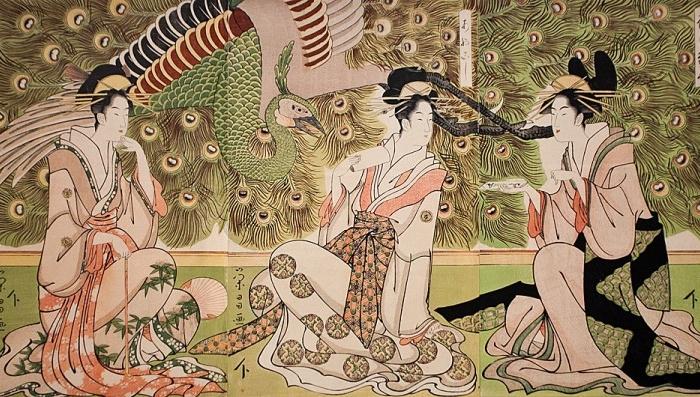NEW YORK—Woodcut prints, painted silk hangings, and a variety of rare and treasured artifacts were on display during the Japanese Art Dealers Association (JADA) Asia Week exhibition this week at the Ukrainian Institute of America. The exhibition brought together the collections of JADA’s five members: Sebastian Izzard LLC Asian Art, Erik Thomsen Asian Art, Leighton R. Longhi, Inc. Oriental Fine Art, Mika Gallery, and Koichi Yanagi Oriental Fine Arts.
The silk hangings of the Leighton R. Longhi, Inc. Oriental Fine Arts collection run through rural scenes of herb gatherers or fishing boats on a mountain stream.
Also in Longhi’s collection is a sandalwood Buddha with gold inlay from the Kamakura period in the 13th century. Longhi describes it as “beautiful and childlike.”
He said of Japanese art, that it has become such a presence in the world that everyone is touched by it.
“The most common prints are of the ‘Mona Lisa’ and Hokusai’s ‘Great Wave,’” said Longhi. “There are iconic images in the world and you can’t help running into them.”
Woodblock Prints Moving Up in the World
For every color in a woodcut print, a separate panel is carved in minute detail. Each hair on the head of a geisha, all the lines tracing patterns on her gown, were carved with precision tools by 18th and 19th century masters to create the woodcut prints displayed in the Sebastian Izzard LLC Asian Art collection.
The Japanese word for woodblock print, ukiyo-e, means “pictures of the floating world.”
Despite the craftsmanship behind the prints, in their day the works were not the highly sought-after prizes that they are now. The prints would have hung in middle-class homes and sold for the equivalent of pennies, explained Gerry McGrane, a tour guide at the Minneapolis Institute of Art who was visiting the exhibit.
The merchant-class bought the prints and displayed the colorfully garbed figures in their homes, but was prohibited from wearing colorful or elaborate clothing by sumptuary laws. Hundreds of prints might have run off a set of blocks, says McGrane.
Izzard said that no record was kept of editions, but the discerning eye can pick out the prints that were made when the blocks were fresh. Lines start to blur when the blocks wear out, so early prints are precious finds today. One such print in Izzard’s collection sold for $600,000.
An Elegant Game of Japanese Cards
Hyakunin Isshu: Uta Karuta (100 poets: one poem each) is a card game that originated in 12th or 13th century Japan. Yu Okuzono, an assistant at the Mika Gallery, says he played it as a child.
Each of 100 short poems is divided in two, with the first half written on one card and the second half written on another, explained Okuzono. The goal is to match the two halves correctly. Okuzono said he could only ever remember two or three poems, but the aristocracy for whom the game was made would have been better versed.
“It’s an elegant game,” said Okuzono.
The theme of matching the pairs together makes the cards a popular wedding gift.












Friends Read Free